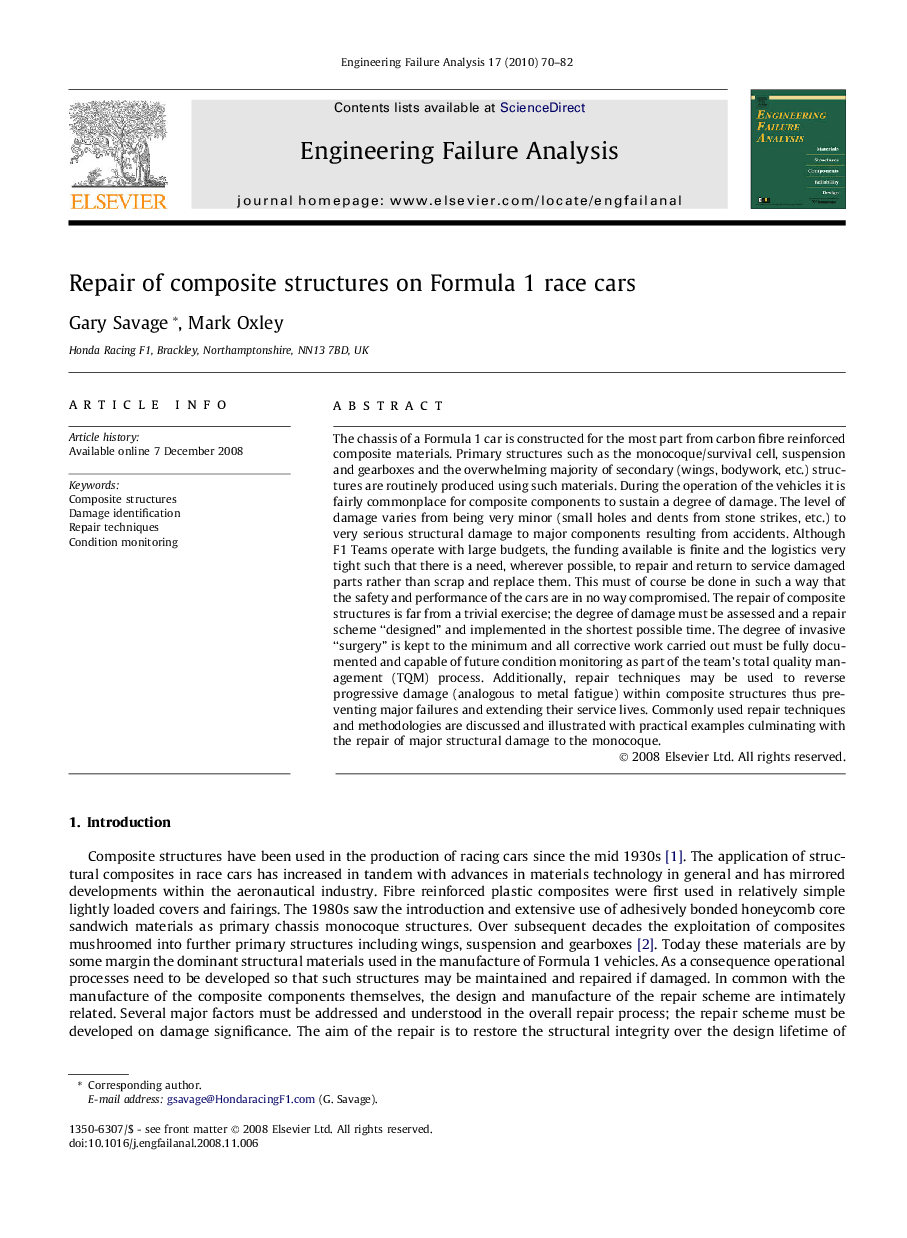| Article ID | Journal | Published Year | Pages | File Type |
|---|---|---|---|---|
| 769061 | Engineering Failure Analysis | 2010 | 13 Pages |
The chassis of a Formula 1 car is constructed for the most part from carbon fibre reinforced composite materials. Primary structures such as the monocoque/survival cell, suspension and gearboxes and the overwhelming majority of secondary (wings, bodywork, etc.) structures are routinely produced using such materials. During the operation of the vehicles it is fairly commonplace for composite components to sustain a degree of damage. The level of damage varies from being very minor (small holes and dents from stone strikes, etc.) to very serious structural damage to major components resulting from accidents. Although F1 Teams operate with large budgets, the funding available is finite and the logistics very tight such that there is a need, wherever possible, to repair and return to service damaged parts rather than scrap and replace them. This must of course be done in such a way that the safety and performance of the cars are in no way compromised. The repair of composite structures is far from a trivial exercise; the degree of damage must be assessed and a repair scheme “designed” and implemented in the shortest possible time. The degree of invasive “surgery” is kept to the minimum and all corrective work carried out must be fully documented and capable of future condition monitoring as part of the team’s total quality management (TQM) process. Additionally, repair techniques may be used to reverse progressive damage (analogous to metal fatigue) within composite structures thus preventing major failures and extending their service lives. Commonly used repair techniques and methodologies are discussed and illustrated with practical examples culminating with the repair of major structural damage to the monocoque.
